Our Experts

David Baron
Award-winning Science Journalist, Broadcaster, and Author
Bio
David Baron is an award-winning science journalist, broadcaster, and author whose recent American Eclipse tells the true story of a total solar eclipse that crossed the Wild West in 1878 and inspired America’s rise as a scientific power. The book received the 2018 American Institute of Physics book prize, and the Wall Street Journal praised it as “a sweeping, compelling portrait of the scientific and social aspirations of Gilded Age Americans.” David is an avid umbraphile and intrepid traveler who has witnessed seven total solar eclipses [note: this should be changed to “seven” after July 2] and visited every continent multiple times. On a reporting trip to Antarctica in 1989, he set foot at the South Pole. A long-time science correspondent for NPR, David has also written for the New York Times, Los Angeles Times, and other publications, and has appeared on CBS Sunday Morning, BBC Newsnight, CNN, and ABC. His popular TED Talk on eclipse chasing (viewed more than 1.8 million times) has inspired many to experience totality for themselves.
David is currently working on his next astronomical study on Mars and Martians. A detailed look at our historical love affair with the planet, and obsession with what may or may not dwell there.
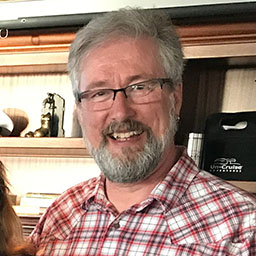
Andrew Booth, PhD
Goddard Space Flight Center, NASA
Bio
Andrew graduated from Oxford University in England in 1978 with a BA in physics and in 1982 with a DPhil in Astrophysics. He worked on stellar atmosphere and stellar fundamental properties, including properties of atoms for interpreting stellar spectra. After several years as a post-doc at Oxford he moved to Sydney University in 1988 as a full professor in Astronomy and was part of the team building the Sydney University Stellar Interferometer, for measuring the sizes of stars. In 1998 he moved to JPL in Pasadena California to work on the Keck Interferometer project in Hawaii for NASA, linking the world’s two largest telescopes into a single instrument. After moving to GSFC in Maryland in 2010, he worked on the James Webb Space Telescope, and now works on the Laser Communication Relay Demonstration mission.
Andrew Loves Elizabethan re-enacting including dancing and singing, and full authentic costume (with puffy pants!). He has also just obtained an authentic Napoleonic Hussar uniform.

Bill Diamond
The SETI Institute, President and CEO
Bio
Bill Diamond is a technology executive and Silicon Valley veteran. He has over 20 years of experience in the photonics and optical communications industry, and a decade in X-ray and semiconductor processing technologies. His corporate background spans the spectrum from venture-backed start-ups to Fortune 100 multinationals, with responsibilities ranging from engineering and operations to sales, marketing, product management
Bill was CEO of WaveSplitter Technologies, raising over $75M in investment capital for the company’s development of optical waveguides in one of the world’s first 8-inch Silicon PLC wafer fabs. He also held CEO positions at DenseLight Semiconductor in Singapore, and Xradia, Inc, (now part of Zeiss) in Concord, California where he led a team that developed the world’s highest resolution X-ray microscopes, as well as manufacturing the only commercially available zone-plate lenses for focusing X-ray beams.
Bill Diamond holds a B.A. in physics from Holy Cross College and a masters in business administration from Georgetown University.
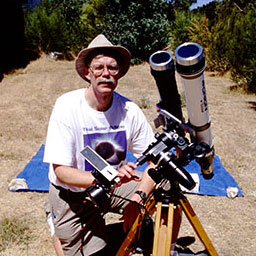
Fred Espenak
Mr. Eclipse
Bio
Fred Espenak’s career as a NASA astrophysicist at Goddard Space Flight Center spans more than 30 years. His primary research involves the infrared spectroscopy of planetary atmospheres although he is better known as NASA’s eclipse expert Mr. Eclipse. Espenak is currently a scientist emeritus at Goddard and he maintains NASA’s official eclipse web site (eclipse.gsfc.nasa.gov) as well as his personal web site on eclipse photography (www.mreclipse.com). Fred has published numerous books and articles of eclipse predictions including the NASA Eclipse Bulletins series, and he is the co-author of the popular book Totality: Eclipses of the Sun. His magnum opus, the Five Millennium Canon of Solar Eclipses, includes a map of every solar eclipse occurring between 2000 BC and AD 3000.
Espenak’s interest in eclipses was first sparked after witnessing a total solar eclipse in 1970. Since then, he has participated in 34 eclipse expeditions around the world including Antarctica. Fred’s eclipse photographs have appeared in both national and international publications, and he has lectured extensively on the Sun, eclipses
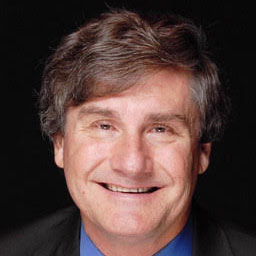
Alex Filippenko
Distinguished Professor in the Physical Sciences, Miller Senior Fellow in the Miller Institute for Basic Research in Science
Bio
Alex Filippenko is the Richard & Rhoda Goldman Distinguished Professor in the Physical Sciences, and a Miller Senior Fellow in the Miller Institute for Basic Research in Science (UC Berkeley). His accomplishments, documented in about 930 research papers, have been recognized by several major prizes, including a share of both the Gruber Cosmology Prize (2007) and the Breakthrough Prize in Fundamental Physics (2015). One of the world’s most highly cited astronomers, he is an elected member of the National Academy of Sciences (2009) and the American Academy of Arts and Sciences (2015). In 2017, he was selected for the Caltech Distinguished Alumni Award. He has won the most prestigious teaching awards at UC Berkeley and has also been voted the “Best Professor” on campus a record 9 times. Selected in 2006 as the Carnegie/CASE National Professor of the Year among doctoral institutions, he has also received the Richard H. Emmons Award for undergraduate teaching (2010).
He has also produced five astronomy video courses with “The Great Courses”; coauthored an award-winning astronomy textbook, and appears in more than 100 TV documentaries, including about 50 episodes of “The Universe” series. He has given about 1000 public lectures or other presentations, and he was awarded the 2004 Carl Sagan Prize for Science Popularization. An avid tennis player, hiker, skier, whitewater rafter, snorkeler, and scuba diver, he enjoys world travel and he loves to observe total solar eclipses (16 so far, all successful!).
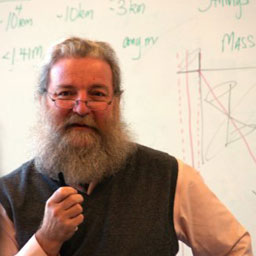
David Helfand
Columbia University astronomer, Quest University founding faculty and President, and author
Bio
David J. Helfand has served on the faculty of Columbia University in New York for forty-two years, nearly half that time as Chair of the Department of Astronomy. He has also spent three years at the University of Cambridge, most recently as the Sackler Distinguished Visiting Astronomer, and earlier was a visiting scientist at the Danish Space Research Institute and the University of Copenhagen. He is the author of over 200 scientific publications and has mentored 22 PhD students, but most of his pedagogical efforts have been aimed at teaching science to non-science majors, including a course of his own design that treats the atom as a tool for revealing the quantitative history of everything from human diet and works of art to the Earth’s climate and the Universe; this course was released as a 24-lecture set by The Teaching Company. Fifteen years ago, he finally succeeded in implementing a vision he began working on in 1982 that has all Columbia first-year students taking his science course as part of Columbia’s famed Core Curriculum. He received the University’s 2001 Presidential Teaching Award and the 2002 Great Teacher Award from the Society of Columbia Graduates. Some time ago, he appeared weekly on the Discovery Channel’s program Science News, bringing the latest astronomical discoveries to the US television audience.
More recently, his television appearances have been limited to more serious matters on Comedy Central’s The Daily Show and the National Geographic channel series, The Known Universe. He believes he is a better cook than astronomer and, ambiguously, most of his colleagues who have sampled his gastronomical undertakings agree. His first book, released last year and entitled “A Survival Guide to the Misinformation Age” provides essential tools any informed citizen must have to combat the tsunami of mis- and dis-information that threatens to drown all rational approaches to personal decision-making and the formation of good public policy.

Dennis Mammana
Astronomy Author and Sky Photographer
Bio
For nearly five decades, Dennis Mammana has delivered the wonder and mystery of the cosmos to audiences around the world.
With a B.A. in physics and astronomy from Otterbein College and an M.S. in astronomy from Vanderbilt University, he has held positions at the Smithsonian Institution’s National Air & Space Museum, the University of Arizona, and San Diego’s Reuben H. Fleet Space Theater & Science Center.
Dennis is the author of six books on popular astronomy―including co-authoring the first-ever book about the search for extra-solar planetary systems―as well as hundreds of popular magazine and encyclopedia articles, scripts and blogs. Since 1992, he has written “Stargazers”, the only syndicated weekly newspaper column about astronomy.
As an accomplished night sky photographer, he is one of only six Americans invited to TWAN (The World At Night), an elite international team of the most highly acclaimed night sky photographers on the planet. His images have been featured nine times as NASA’s Astronomy Picture of the Day and dozens of times on the front page of Spaceweather.
A dynamic public speaker, Dennis has inspired and informed audiences on six continents. He has traveled to the Arctic and Subarctic more than 30 times to lecture about and photograph the aurora borealis (the northern lights) and has witnessed and photographed 18 total solar eclipses.
When not spending time with his head in the stars, he enjoys cooking home-style Italian food, sports, weight-training, tending to his Italian herb and vegetable garden, exploring the desert canyons in his Jeep 4×4, watching reruns of Gunsmoke, taking naps, and relentlessly pursuing the perfect Philly cheesesteak sandwich―not necessarily in that order.
He now works as an astronomy writer, lecturer, and photographer under the clear, dark skies of Southern California’s Anza-Borrego Desert. You can visit him online at dennismammana.com.
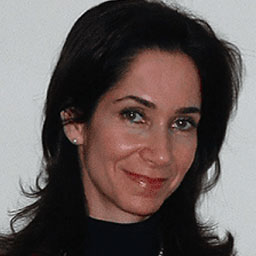
Saralyn Mark, MD
Bio
Saralyn Mark, MD, an expert on space medicine and a world renowned leader in women’s health, is an endocrinologist, geriatrician and women’s health specialist. As President and CEO of SolaMed Solutions, LLC, Dr. Mark has served as a medical and scientific policy advisor to the White House, NASA, HHS Office on Women’s Health, Gates Strategic Investment Fund, XPRIZE Health and Pandemic Alliance Brain Trust and other organizations dedicated to improving health on Earth and in space. She is also the President of iGIANT®, the only nonprofit accelerating gendered innovation in the world. She is also Director for Health Innovation for Star Harbor Academy. Dr. Mark holds 4 academic appointments including at Yale and Kings College-London in the Center for Human and Aerospace Physiology. Dr. Mark completed her residency and fellowships including designing the first women’s health fellowship at UCSF. She is author of Stellar Medicine: A Journey Through the Universe of Women’s Health which chronicles her adventures with the space program and her journey across all 7 continents which she incorporates into her podcast, Always Searching. She has published and delivered over 700 lectures and is a frequent health media expert including a monthly columnist for The Hill.. Dr. Mark was invited by the White House to testify about her work on precision innovation for the National Space Council which is led by the Vice President. She has received numerous awards including the NYU School of Medicine Alumni Leadership Award for her contributions to medicine, precision health and emerging technologies.
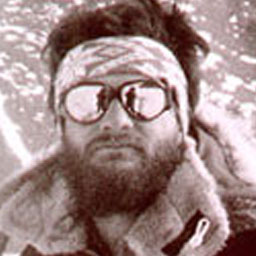
Chris McKay, PhD
Member, Mars Society
Planetary Scientist with the Space Science Division of NASA Ames
Bio
Chris McKay received his Ph.D. in AstroGeophysics from the University of Colorado in 1982 and has been a research scientist with the NASA Ames Research Center since that time.
His current research focuses on the evolution of the solar system and the origin of life. He is also actively involved in planning for future Mars missions including human settlements.
Chris has been involved with polar research since 1980, traveling to the Antarctic dry valleys and more recently to the Siberian and Canadian Arctic to conduct research in
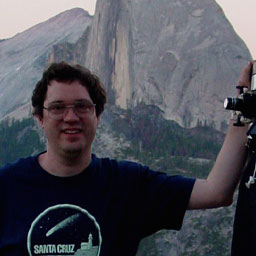
Robert Naeye
Former Editor in Chief, Sky & Telescope
Bio
Robert Naeye is a former Editor in Chief of Sky & Telescope, the world’s most respected and influential popular astronomy magazine. Robert earned a master’s degree in science journalism from Boston University in
Robert is the author of two books: Through the Eyes of Hubble: The Birth, Life, and Violent Death of Stars (Kalmbach, 1997) and Signals from Space: The Chandra X-ray Observatory (Turnstone, 2000). He has contributed to two other

William Shehan
Contributing Editor, Sky & Telescope
Psychiatrist, consultant to PACT-4 Families Collaborative
Bio
William Sheehan is one of the world’s leading students of the planet Mars. In June 2001, he and a team of observers in the Florida Keys predicted and observed Martian flares at Edom Promontorium, observations which have contributed an important chapter in the search for Martian water in near-equatorial regions. A major area of his astronomical interest has always been the history of
Sheehan’s first book, “Planets & Perception”, published in 1988, was a Book-of-the-Year Selection of the Astronomical Society of the Pacific. Other critically acclaimed books include: “Worlds in the Sky” (1992), “The Immortal Fire
Sheehan is a contributing editor to “Sky & Telescope” and to “Mercury” magazines. He is also a 2001 Fellow of the John Simon Guggenheim Memorial Foundation, awarded for his work-in-progress: “The Structure and Evolution of the Milky Way Galaxy.” In 2001-2002, he was a Visiting Research Associate at the Lick Observatory and a Visiting Professor of Astronomy at the University of the Witwatersrand, Johannesburg, South Africa.
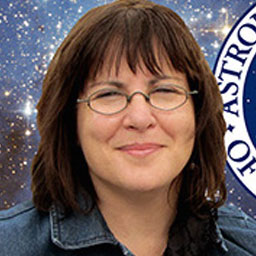
Linda Shore, PhD
Executive Director, Astronomical Society of the Pacific
Bio
Dr. Linda Shore is the Executive Director of the Astronomical Society of the Pacific. Most recently, Shore served as Director of the Teacher Institute at San Francisco’s renowned science museum, the Exploratorium. While there she led a staff of scientists and
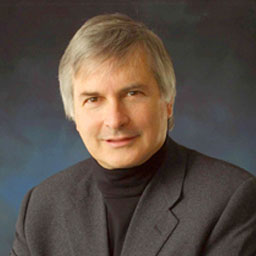
Seth Shostak, PhD
Public Programs Scientist and Senior Astronomer, SETI Institute
Bio
Dr. Seth Shostak claims to have developed an interest in extraterrestrial life at the tender age of
In addition, Shostak is keen on outreach activities: interesting the public – and especially young people – in science in general, and astrobiology in particular. He’s co-authored a college textbook on
Dr. Shostak is
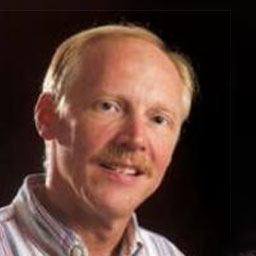
Mark Showalter, PhD
Senior Research Scientist, SETI Institute
Bio
Planetary astronomer Mark Showalter is rabid about rings. While everyone knows about Saturn’s spectacular ring system, it’s often forgotten that Jupiter, Uranus, and Neptune are also encircled by fainter and narrower rings. Each of these systems interacts closely with a family of small, inner moons. Showalter works on some of NASA’s highest-profile missions to the outer planets, including Cassini, now orbiting Saturn, and New Horizons, which flew past Jupiter en route to its 2015 encounter with Pluto. Known for his persistence in planetary image analysis, Mark’s work on the earlier Voyager mission led to his discovery of Jupiter’s faint, outer “gossamer” rings and Saturn’s tiny ring-moon, Pan.
Mark was recently granted three more years to study the system of rings and moons orbiting Uranus with the Hubble Space Telescope. He has been leading a team of astronomers in this investigation off and on since 2002. This work has already led to the discovery of two small moons and two faint rings. He enjoyed the opportunity to name the moons “Mab” and “Cupid,” after characters from Shakespeare’s plays.
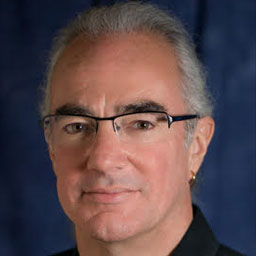
Alan Smale
Scientist, Science Fiction Author
Bio
Born and raised in England, Alan Smale is a scientist, science fiction writer, singer, and veritable renaissance man. He graduated from Oxford University with a B.A. in Physics and a D.Phil in Astrophysics, and emigrated to the US in his late twenties. He performs research into the physics of Galactic black holes and neutron stars, with over a hundred published papers, and currently works at NASA’s Goddard Space Flight Center as Director of the HEASARC (High Energy Astrophysics Science Archive Research Center). A lifelong enthusiast of the skies, he recalls being fascinated by the Apollo Moon landings, and cold Yorkshire nights in the back yard with his father, looking at the Moon, planets, stars and galaxies through a small refracting telescope.
Alan is also an award-winning writer of speculative fiction. His Clash of Eagles series of alternate history novels, set in a Roman occupation of North America, is available from Penguin Random House/Del Rey, and future books are in the pipeline. He has over forty pieces of shorter fiction in print in various professional science fiction magazines and original anthologies, and is a regular panel participant at Comic Cons and other science fiction conventions.
In what he humorously refers to as his “spare time”, Alan sings bass with six-person high energy vocal band The Chromatics, frequent performers at science fiction conventions, concert halls, museums and planetaria. Their astronomically-correct series of original songs, the AstroCappella Project, is in use in schools across the country.
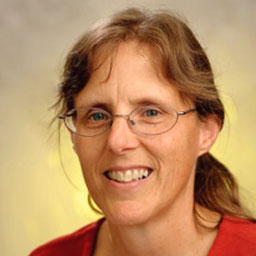
Marcie Smith
Mission Director, Kepler Mission
Mission Operations in the Space Projects Division at NASA Ames Research Center
Bio
Marcie Smith received her masters in Aeronautics and Astronautics Engineering at Stanford University in 1980 and has been fortunate to have worked in unmanned planetary science flight operations ever since. She began as a flight operations engineer for the Pioneer
Marcie is also a private pilot and flies a Cessna 182. She is an active member of the 99s – the International Organization of Women Pilots, and whenever she can
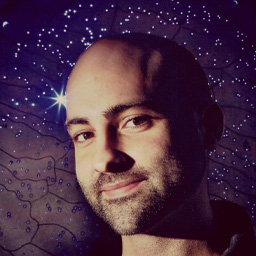
Paul Sutter
Astrophysicist, Author, Speaker, Producer, and On-air Host
Bio
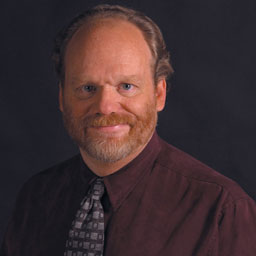
Rich Talcott
Senior Editor, Astronomy magazine
Bio
Senior Editor Rich Talcott brings to the magazine a lifelong interest in the science of astronomy as well as observing the night sky. He graduated from Marietta College in Marietta, Ohio, in 1976 with a degree in Mathematics. After attending graduate school at Ohio State, Rich returned to Marietta in the early 1980s as a Lecturer in the Physics Department. He joined the staff of Astronomy in early 1986 and hasn’t looked back.
Rich edits the Sky This Month section in the center of Astronomy as well as science and hobby features. In addition, he has written more than one hundred feature articles for the magazine. He also creates most of the star charts you see in Astronomy as well as the maps that appeared in Atlas of the
In collaboration with Joel Harris, Rich authored Chasing the Shadow: An Observer’s Guide to Eclipses. He has witnessed six total solar eclipses and hopes to add many more to the total.
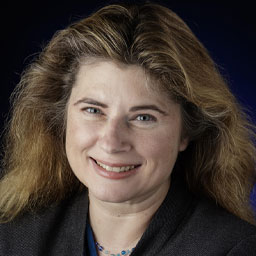
Michelle Thaller, PhD
Research Scientist,
California Institute of Technology
Bio
Dr. Michelle Thaller is an astrophysicist with over two decades of science communication experience. Her research involves the lifecycles of stars, and she has worked at the Jet Propulsion Laboratory and Goddard Space Flight Center.
Originally from Waukesha, Wisconsin, Michelle obtained a Bachelor’s degree in astrophysics from Harvard University. Specializing in high-resolution velocity measurements of binary stars, her honors thesis laid some of the
During her research, Michelle has used both ground and space-based telescopes, including Kitt Peak National Observatory, Mount Stromlo and Siding Spring Observatories (in Australia), the International Ultraviolet Explorer, the Hubble Space Telescope, and ROSAT. She is currently a senior scientist on the Spitzer Space Telescope, a satellite that views the universe entirely through infrared, or “heat” light.
Michelle dedicates more than half her time to public education and
